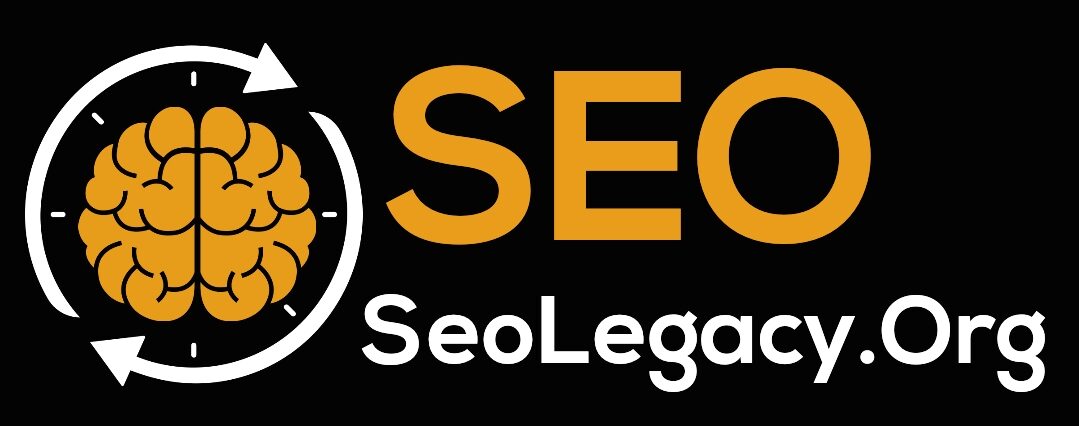SEO up-to-date – what still works today
Just as the Internet is subject to constant change over the years, optimization has also changed considerably over the years. This is mainly due to changes in Google’s algorithm, which meanwhile makes changed and updated demands on a good website. Webmasters and successful SEOs have therefore changed and expanded their search engine optimization measures. Successful SEO today always consists of a proven mix of measures, while success can be measured and evaluated using various tools. Current measures that not only ensure good positioning, but can also maintain it in the long term, will be discussed in more detail here.
From the scrap heap: these SEO methods are no longer up-to-date
At the beginning it is important to look at outdated methods that either no longer guarantee success or can even have a harmful effect on a page. Above all, link networks and ruthless link spam should be mentioned here. Backlinks still have a high value – of course – but the quality of these links is now much more important than pure quantity. Backlink spam via countless web catalogues, article directories, bookmarking services and the like is considered outdated. Links of this type are usually incredibly weak, and there’s always a risk that the website will end up in a bad neighborhood. What is meant is when these directories provide links to gambling or erotic sites, for example. Link networks, where unkempt pages link to each other in the wheel, are now simply exposed and can lead to penalties. On-page, pure keyword spamming has long been a thing of the past, which can also often lead to penalties.
Current OnPage measures: Content is still king
The most important ranking factor for a website is now the content that it offers to the visitor. High-quality texts that offer real added value and are of course completely unique are indispensable for modern search engine optimization. Keywords do not have to be completely dispensed with here, but as a rule rigid percentage specifications (or percentages that are too high) are no longer used. Instead, it is currently being optimized according to the proven “WDFIDF formula”. With this method, the keyword distribution from several well-positioned pages is used and summarized via a median. When creating the text, it is guaranteed that both primary and secondary search terms that fit the page and increase relevance to the topic are used. Apart from that, quality plays a decisive role. Texts must be legible and free of errors. Formatting to avoid a “wall of text” also plays an important role. WDFIDF analyzes can be performed using various free and paid (higher volume) online tools.
While copy is the backbone of any website, it is not the only essential component that ensures quality content. A healthy media mix, consisting of videos and images, offers added value and alternatives to pure text form. In the case of images in particular, it is important to ensure that compressed versions are used so that the loading time of a page is not increased unnecessarily. Furthermore, alt tags should be defined for images and file names should also be used that already pick up one of the primary search terms of the respective page. A high degree of diversification in the media content also has advantages in social media marketing – coupled with the signals from social networks, another current SEO factor.
SEOs pay more and more attention to a positive user experience
How the user feels on a website is not only reflected in the proportion of returning users, but is also an important pillar in modern SEO. Google’s algorithm now uses a lot of behavioral data for website users, be it the length of stay (the longer, the better), the pages viewed per visit or the bounce rate (the higher, the worse). This data also indirectly reflects the quality of a page. If the user is satisfied with the content and finds it interesting, he will spend more time and longer on the site. On the other hand, if the website does not offer what they expected or what they want, they will quickly leave it again. Content marketing and the content offered in general correlate strongly with the user experience, but also with the design of a page and, for example, the loading times. Therefore, with modern websites, the page itself is always improved for search engine optimization – this ensures better positioning AND can have a beneficial effect on the conversion rate, for example. A good website must therefore:
- look serious
- function technically flawlessly
- look attractive
- be intuitive to use
- and offer unique content with real added value
With all these factors, it should also be noted that a large volume of all Internet users now uses mobile devices exclusively or partially. A website must therefore either have a mobile alternative or a responsive web design. This is particularly elementary in view of one of the latest Google announcements: the separation of mobile search from classic desktop search. From now on, users on mobile devices will only be shown pages that actually offer a positive user experience, especially on smartphones, tablets and co. So if you don’t want to exclude some users in advance, you should work on your mobile orientation now at the latest.
Backlinks with measure, instead of sheer mass
As briefly mentioned at the beginning, off-page optimization has also changed continuously over the years. Link wheels and the sheer mass of backlinks play just as little a role as the PageRank of the site that provides the backlink. Instead, backlinks these days should ideally come from well-known and topic-related sites and thus represent an actual recommendation. Keyword spam as link text is also no longer up-to-date and at best only plays a marginal role. At least since the Penguin update, too many backlinks with keywords as link text can even become dangerous. A natural link profile is advantageous and guarantees long-term good positioning, where penalties are efficiently avoided. The traffic potential of a backlink also plays a crucial role. If the link is simply hidden on a page and at best exists from a technical point of view, it automatically loses its value. On the other hand, if it conveys traffic that actually takes a closer look at the target page, this is advantageous.
Link spam should be avoided completely
and if they already exist, they may even be dismantled by removing or nullifying the backlinks again – this can be done using the Google Disavow Tool. Unwanted links can be easily reported and nullified. This is particularly ideal if your own site is linked to gambling or erotica sites in an unwanted manner. The ideal case is still that a website is linked to other high-quality sites in a very natural way, without any action on your part. This is usually only possible with unique and high-quality content, which is then recommended by other webmasters or used as a reference/source.
Local SEO as another focus
Local SEO, i.e. localized search engine optimization, is one of the most important measures in 2015. The reason for this are current changes at Google, in which, among other things, the IP address or GPS information is used to make the SERPs (search results) even more personal for the user to create seekers. In particular, websites that also have a local anchor, such as restaurants, brick-and-mortar retailers or service providers, should also focus their efforts on local SEO. This can be done, among other things, via the Google+ page for companies, reviews and reports on Google+ and the provision of direct contact details on these same pages – and the entry on Google Maps. If typical local search terms are used, for example “Restaurant Innsbruck”, the positioning of a page is strengthened.
Intensify social media signals
Social networks and social media portals (Instagram, Pinterest, Facebook, Twitter, Google+, YouTube and Co) are no longer completely separated from classic search engine optimization. Instead, it is important to intensify the signals that the website receives from these portals. This can be done via likes, shares and links from the portals. There are two different options available for this to work:
1.) a company actively operates its own pages and profiles in some (or many/all) social media portals, which are regularly filled with content and lead to the website. In this way, a company strengthens the branding of a brand and provides signals from social networks that, coupled with the backlinks, have a positive effect on the website.
2.) creative and high-quality content is distributed independently by users in social networks. This can be done using the popular Like and Share buttons on the respective portals. In this way, the user only has to click one button to distribute the desired content directly via their own profile. Another advantage here is that so-called multipliers (users with many and particularly active contacts) can represent a significant source of traffic.
Signals from social media portals and social networks have the advantage that they actively strengthen the branding of a brand and at the same time ensure traffic, but at the same time have a positive effect on search engine optimization. It is therefore all the more important to no longer treat this measure as neglected or as a sideline, but instead to expand it and further intensify measures for social media.
The evergreen: headlines and meta tags.
“Right” headlines and meta tags are among the timeless measures of search engine optimization. Headlines should be clearly defined as h1 (for the main heading) and h2/3/4 (for subheadings). At the same time, it is advisable to integrate keywords into the headlines in a natural way. It is also important to note the length, even with meta tags. The title of your page should not be longer than 55 characters (without spaces) so that it is not cut off in the search results. It should also offer informative value and be worded in an appealing way. Other tags also need to be filled out on the page, such as an informative meta description or filled out meta keys for the sake of completeness. The following basic rules apply to meta tags:
- each URL should use individual meta tags
- these should always be unique
- the primary keyword for the particular page needs to be accommodated
- the number of characters should not be exceeded
- The title and description should provide users with added value in a short form
Search engine optimization analysis tools
Google already offers two of its own elementary SEO tools: Google Analytics on the one hand and the Search Console (formerly Webmaster Tools) on the other. Analytics provides all the statistics a webmaster could hope for. Here the traffic is recorded, where it comes from, which pages are particularly popular and how users behave on the page. Analytics can be used to find vulnerabilities, improve high bounce rate pages and identify previously untapped traffic sources. The Search Console provides an insight into the technical side, shows, among other things, sources of error, provides information on the Google index and lists the pages already indexed in the search index. The Search Console is ideal for finding technical errors in particular, which is important because 404 pages and faulty code have a negative effect on search engine optimization. According to the Sistrix Toolbox, it is the tool most used by professionals and provides detailed listings of backlinks, social signals, SEM campaigns and subpages. Thanks to the timeline, changes in positioning can also be viewed over a specified period of time – this is ideal for measuring success.
Modern search engine optimization is therefore particularly diverse and has long since moved away from spam measures on or off the site. Instead, a healthy mix of measures, implemented with know-how and care, ensures good positioning that can be maintained over a longer period of time.



